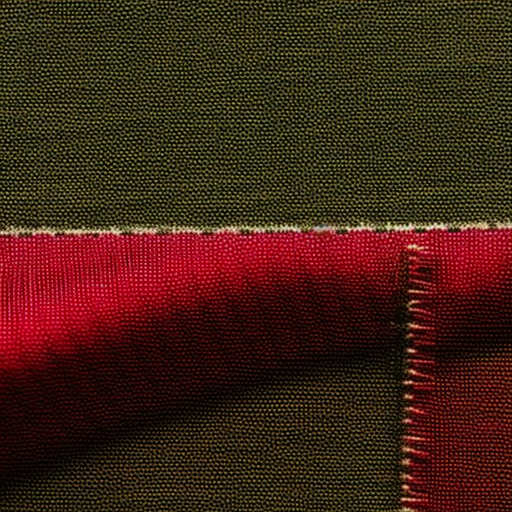
When it comes to sewing with polyester, there are a few tips and tricks that can help you achieve the best results.
Whether you are a beginner or an experienced sewist, these tips will come in handy to make your sewing projects with polyester fabric much more enjoyable and successful.
Choose the Right Needle and Thread
Polyester is a synthetic fabric that is known for being durable and wrinkle-resistant. To sew polyester, it is recommended to use a polyester or
polyester-blend thread. This type of thread has some stretch, allowing it to work well with the fabric’s properties.
Furthermore, choose a fine needle, such as a universal needle or a ballpoint needle, to prevent any damage to your fabric.
Remember to change your needle regularly, as a dull needle can cause skipped stitches or snag the fabric.
Pre-wash Your Fabric
Polyester can sometimes shrink or stretch after washing. To avoid any potential issues with the fit of your final garment,
it is important to pre-wash your polyester fabric before starting your sewing project.
Follow the fabric’s care instructions and use a gentle cycle to prevent any damage.
By doing this, you ensure that any potential shrinkage or stretching occurs before you start working with the fabric.
Use the Right Stitch and Tension
When sewing polyester, it is advisable to use a medium-length straight stitch or a small zigzag stitch. These stitches provide enough flexibility
for the fabric, ensuring it maintains its stretch and does not snap.
Adjust the tension settings on your sewing machine accordingly, as too high tension can cause the fabric to pucker, while too low tension can result in loose stitches.
Test your stitch and tension settings on a scrap piece of fabric before sewing the final seam to ensure optimal results.
Tame the Slippery Fabric
Polyester can be quite slippery, making it challenging to handle during the sewing process.
To help with this, you can use fabric clips instead of pins to hold the fabric pieces together.
Additionally, using a stabilizer or tissue paper underneath the fabric when sewing hems or delicate areas can provide extra support and prevent distortion.
Finishing Touches
Finally, when finishing your polyester sewing project, consider using a serger or a zigzag stitch along the raw edges to prevent fraying.
If you prefer a cleaner finish, you can also use fabric adhesive tape or fabric glue to secure the seams.
Remember to let your project rest or hang for a bit before making any final hem adjustments, as polyester fabric can stretch over time.
By following these tips, you’ll enhance your sewing experience with polyester fabrics, whether you’re creating garments, accessories, or home decor items.
Polyester offers durability, versatility, and a wide range of colors and patterns to choose from, making it a popular fabric choice for many sewing projects.
With the proper techniques and attention to detail, you’ll achieve beautiful results in your polyester sewing endeavors.





Fabulous tips for sewing Polyester!
Beth Rons: These are really helpful!
Great advice, everyone! Polyester can be tricky to work with, but with these tips you can get the job done! #HappySewing